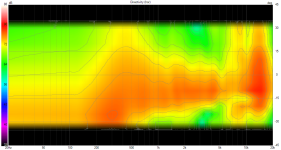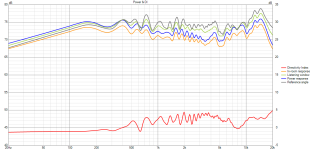What you mean @eriksquires is that stepped baffles is a way of showing the world that you are a real, serious audiophile because they usually ruin the look of your speakers? 😎I just want to add something. Stepped baffles are very cool looking and anyone who doesn't think so is dead inside. 😉
Tilting of "main lobe" around MT xo because of timing/distance offset can be heard and measured easily, IMO. I use only DSP-xo and symmetric LR2 or LR4 acoustic slopes, so delay is easy to adjust very precisely. Step response and reversed polarity of tweeter are used to analyze. When xo is 3kHz or higher, it is easy to be a full cycle off and this leads to negative summing one octave up and down from xo. I haven't saved the test measurements which were off.
Vertical main lobe accuracy is important and worth the trouble for a diyer who knows the location an sitting height of the end user. And it is often about +/- 10 deg anyway.
I hear it just like Norman best with transients eg. cymbal hit, piano high single short notes etc. With female voice or violin it just changes the tonality a little.
A step in the baffle makes lots of interferences, so it is not a wise way to time-align passive speakers.
AINOgradient is 4-way with acoustic LR2-elliptic xos, M/T 3200Hz


Vertical main lobe accuracy is important and worth the trouble for a diyer who knows the location an sitting height of the end user. And it is often about +/- 10 deg anyway.
I hear it just like Norman best with transients eg. cymbal hit, piano high single short notes etc. With female voice or violin it just changes the tonality a little.
A step in the baffle makes lots of interferences, so it is not a wise way to time-align passive speakers.
AINOgradient is 4-way with acoustic LR2-elliptic xos, M/T 3200Hz


Last edited: